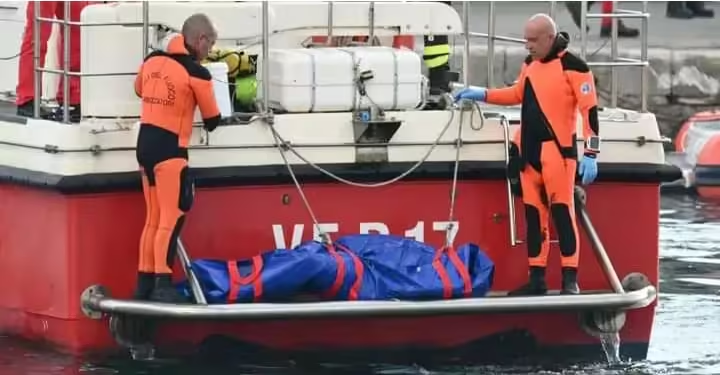The sinking of the luxury vessel **Bayesian Yacht** has sparked controversy, with the yacht’s maker, a prominent shipbuilding firm known for its state-of-the-art designs, blaming the crew for what it calls “indescribable, unreasonable errors” that led to the tragic incident. This statement, released in the aftermath of the sinking, has ignited a debate over accountability and the events that transpired on the fateful day.
The **Bayesian Yacht**, a multimillion-dollar masterpiece, was touted as one of the most advanced yachts of its kind. Equipped with cutting-edge technology and designed to withstand the most challenging maritime conditions, its sinking came as a shock to the maritime community and the broader public. The vessel, which was on a high-profile voyage with several wealthy passengers onboard, went down unexpectedly in what was initially thought to be a freak accident.
In the days following the incident, the shipbuilder conducted a preliminary investigation, which it claims points directly to human error as the primary cause. According to the company, the crew failed to properly manage critical systems on the yacht, leading to a series of catastrophic failures. The company’s spokesperson highlighted that the yacht was equipped with an array of automated and manual systems designed to ensure safety and stability, but these systems were reportedly “mismanaged or outright ignored” by the crew.
The shipbuilder’s statement specifically pointed to “unreasonable errors” in the handling of the yacht’s navigation and stabilization systems. It was suggested that the crew did not follow standard operating procedures, possibly due to overconfidence in the vessel’s advanced technology or a lack of proper training. The company went as far as to describe the crew’s actions as “indescribable,” indicating that the errors made were so fundamental that they defied understanding given the crew’s training and the yacht’s capabilities.
This narrative, however, has not gone unchallenged. Critics argue that the shipbuilder’s quick move to blame the crew might be an attempt to deflect responsibility and shield itself from potential legal repercussions. Maritime experts have pointed out that while human error is a common cause of maritime accidents, the design and systems of a vessel should account for and mitigate such errors. They suggest that the incident might involve more complex factors, such as potential flaws in the yacht’s design, maintenance issues, or a combination of unforeseen circumstances that overwhelmed the crew.
Survivors of the incident have also expressed frustration with the shipbuilder’s stance, describing it as an unfair scapegoating of the crew, many of whom lost their lives in the tragedy. They argue that the crew did everything within their power to save the vessel and its passengers, and that blaming them posthumously adds insult to injury.
As investigations continue, the debate over what truly caused the **Bayesian Yacht** to sink is likely to intensify. The shipbuilder’s statement has certainly shaped the narrative, but it is clear that more information is needed to fully understand the sequence of events and to ensure that justice is served for all parties involved. The incident serves as a sobering reminder of the complexities and risks inherent in maritime operations, even with the most advanced technology at hand.
